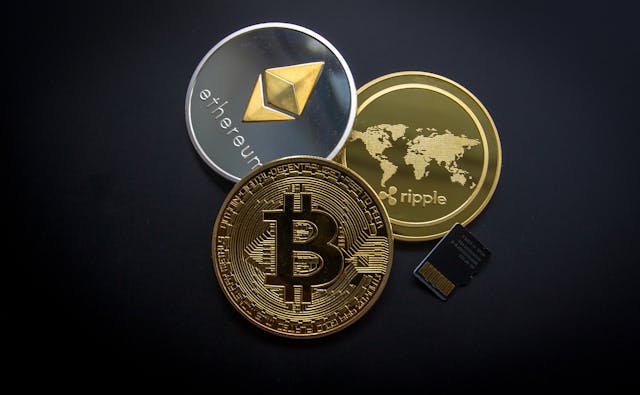How to Swap Ethereum: A Quick Guide for Beginners
Swapping Ethereum is a practical strategy for investors who want to diversify, secure stable assets, or participate in new opportunities within the Ethereum ecosystem. With a trusted platform, you can swap ETH safely and quickly, maintaining flexibility in your portfolio without needing to cash out in traditional currency.

Ethereum has become one of the most popular and versatile digital assets in the crypto space, widely used not only as an investment but also as a gateway into the world of decentralized finance (DeFi) and blockchain applications. As the crypto market grows, many Ethereum holders want to diversify or manage their portfolios by converting ETH into other digital assets. In this guide, we’ll cover what it means to swap Ethereum, the steps involved, and how to do it securely.
1. What Does it Mean to Swap Ethereum?
Swapping Ethereum means exchanging ETH directly for another digital asset, like a stablecoin or another cryptocurrency, without converting to fiat currency. This direct swap process allows users to diversify their holdings and access new assets or stablecoins like USDC and DAI, which are pegged to the U.S. dollar for lower volatility.
Swapping typically occurs on decentralized exchanges (DEXs) or through dedicated swap services. These platforms leverage Ethereum’s smart contracts, enabling a secure, transparent transaction without intermediaries.
Swapping Ethereum can be a strategic decision with several key advantages:
Swapping allows users to manage their digital assets within the decentralized ecosystem, providing both flexibility and cost savings.
Swapping Ethereum safely requires using a reliable platform and following a few simple steps. Swap services use Ethereum’s smart contracts, providing users with a secure way to exchange assets without needing a traditional exchange.
To swap Ethereum securely, follow these steps:
Using a trusted service for swaps ensures your transactions are handled safely and securely.
4. Decentralized Exchanges (DEXs) vs. Centralized Platforms for Swaps
Swapping Ethereum can be done on both decentralized exchanges (DEXs) and centralized platforms, each offering unique features:
Beginners may find centralized platforms more accessible, while experienced users might prefer the autonomy and lower fees often available on DEXs.
5. Fees Involved in Swapping Ethereum
Swapping on the Ethereum network involves transaction fees known as “gas fees.” These fees pay for the cost of processing transactions on Ethereum and are typically required in small amounts of ETH. Besides gas, DEXs or swap platforms may charge a service fee.
Gas fees fluctuate based on network activity, so it’s wise to check real-time gas prices before making a swap. High network usage can lead to higher fees, so timing your transactions can help you save costs.
6. When to Consider Swapping Ethereum
Swapping Ethereum can be a beneficial strategy for various reasons:
For users looking to adjust their portfolios, swapping Ethereum is an efficient tool to adapt quickly to the market.
7. The Future of Ethereum Swaps
Ethereum is continuously improving with advancements like Ethereum 2.0, which promises faster transaction speeds and reduced gas fees. These developments are likely to make Ethereum swaps even more efficient and affordable.
Additionally, Layer 2 solutions, such as Optimism and Polygon, are also working to reduce network congestion on Ethereum, lowering gas fees and making swaps faster. As Ethereum becomes more scalable, the ease and cost-effectiveness of swapping are expected to improve, making it a more accessible tool for users worldwide.
Conclusion
Swapping Ethereum is a practical strategy for investors who want to diversify, secure stable assets, or participate in new opportunities within the Ethereum ecosystem. With a trusted platform, you can swap ETH safely and quickly, maintaining flexibility in your portfolio without needing to cash out in traditional currency.
For those looking to maximize their investments and explore new crypto assets, swapping Ethereum is a valuable, efficient approach to managing digital assets.

Leave a comment